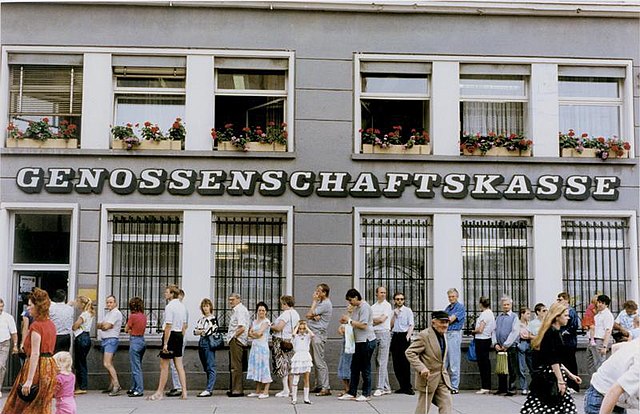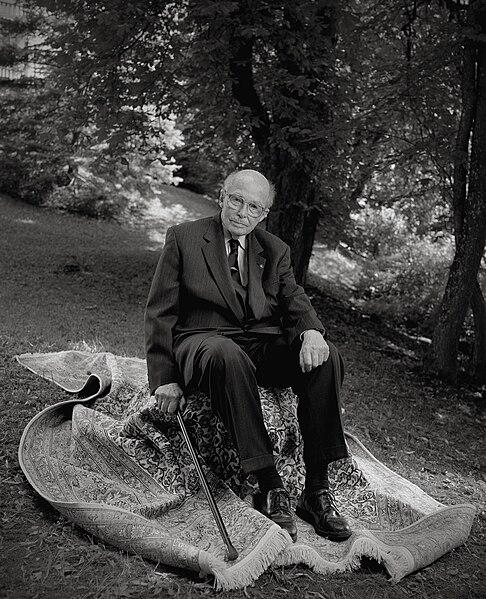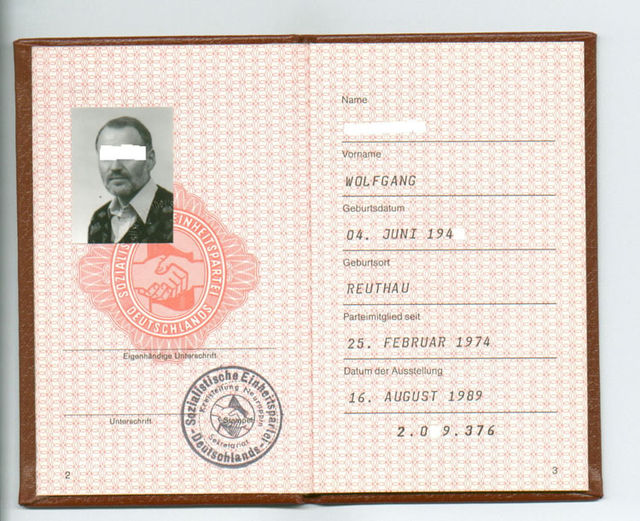The Peaceful Revolution, as a part of the Revolutions of 1989, was the process of sociopolitical change that led to the opening of East Germany's borders with the West, the end of the ruling of the Socialist Unity Party of Germany (SED) in the German Democratic Republic in 1989 and the transition to a parliamentary democracy, which later enabled the reunification of Germany in October 1990. This happened through non-violent initiatives and demonstrations. This period of change is referred to in German as Die Wende.
Berlin Wall falls at the Brandenburg Gate, 10 November 1989
Monday demonstration in Leipzig, 16 October 1989
Queue outside a bank in Gera, on 1 July 1990, the day that the GDR adopted the West German currency
Otto von Habsburg, who played a leading role in opening the Iron Curtain
Socialist Unity Party of Germany
The Socialist Unity Party of Germany was the founding and ruling party of the German Democratic Republic from the country's foundation in 1949 until its dissolution after the Peaceful Revolution in 1989. It was a Marxist–Leninist communist party, established in 1946 as a merger of the East German branches of the Communist Party of Germany and Social Democratic Party of Germany.
21 April 1946: Otto Grotewohl (right) and Wilhelm Pieck (left) seal the unification of the SPD and KPD with a symbolic handshake. Walter Ulbricht is seated in the foreground to the right of Grotewohl.Avraham Pisarek
The 11th Congress in Palast der Republik, East Berlin
An SED Membership Card







